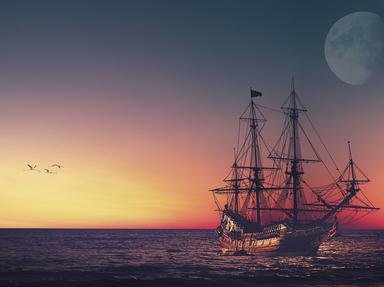Quiz Answer Key and Fun Facts
1. There have been many expeditions to Antarctica over the years, the Greeks in the first century AD even had an idea that a large land mass existed far to the south. One man though had to be the first to enter the Antarctic Circle. Who was this intrepid explorer?
2. There is some dispute as to who was the first person to actually sight Antarctica for the first time. One man, though, is generally credited with this action, but only by a space of two days. Can you name him?
3. One expedition achieved a number of 'firsts' on the continent, including reaching the southern magnetic pole and climbing Mount Erebus. Who led this expedition which took place in 1908/9?
4. The British Antarctic Expedition of 1910, led by Robert Falcon Scott, was an attempt to reach the geographic South Pole. They succeeded in their goal in January 1912, only to discover that Roald Amundsen and his team had beaten them by a month. Which of the listed is one of the major reasons for Scott's failure?
5. Between 1839 and 1843 an Antarctic expedition was led by British naval officer James Clark Ross. This voyage mapped much of the Antarctic coastline. Which of the following features was neither named by him, or in honour of him?
6. In 1914 the Imperial Trans-Antarctic Expedition, led by Ernest Shackleton set out to cross Antarctica via the South Pole. Their ship, the Endurance, became trapped in pack ice and was crushed before they even reached the continent. The expedition members then trekked across Elephant Island. Shackleton and five others then set out in a boat to fetch help. Where did they reach land?
7. A quiz on Antarctica wouldn't be complete without mentioning the race between Scott and Amundsen. Much is known about these two men, but what were the names of the ships that they used?
8. After Scott and Amundsen reached the pole in 1911 it was another 47 years before it was reached again overland.
9. The 1958 Commonwealth Trans-Antarctic expedition led by Dr Vivian Fuchs was funded by several Commonwealth countries. Which of the listed nations did not take part or provide funding?
10. In January 1978 something happened in Antarctica for the first time. It took place at Hope Bay. What happened?
Source: Author
romeomikegolf
This quiz was reviewed by FunTrivia editor
Exit10 before going online.
Any errors found in FunTrivia content are routinely corrected through our feedback system.
